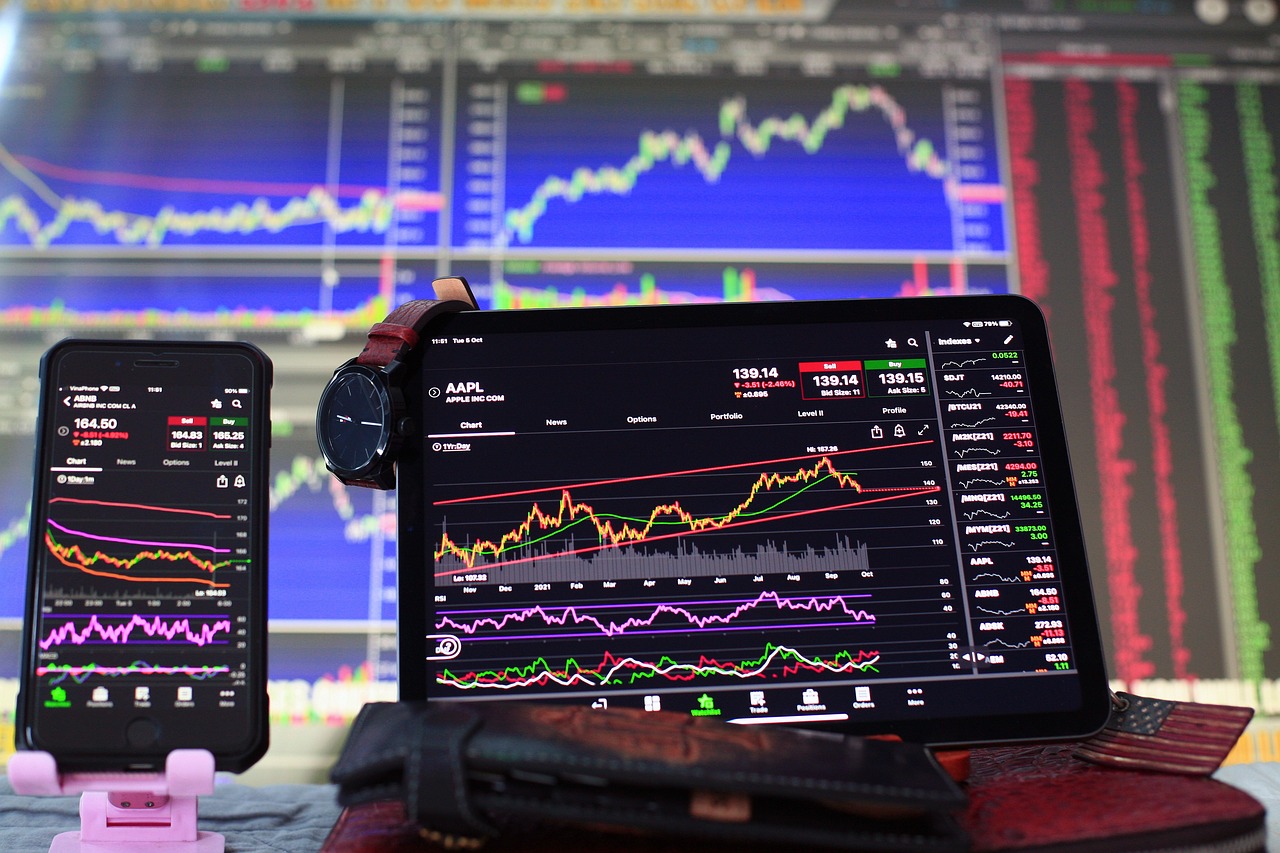The Impact of Major Sporting Events on Crypto Prices
In recent years, the world of cryptocurrency has become increasingly intertwined with the realm of sports. As millions tune in to watch their favorite teams compete, the influence of major sporting events on crypto prices has become a topic of interest for investors and enthusiasts alike. But what exactly is happening behind the scenes during these high-stakes moments? Are investors reacting to the excitement of the game, or is there a more systematic relationship at play? In this article, we will explore the intricate ways in which significant sporting events can sway cryptocurrency markets, analyzing trends, investor behavior, and the fascinating correlation between sports and digital currencies.
The cryptocurrency market is a complex ecosystem comprising various digital currencies, exchanges, and investors. At its core, cryptocurrencies are decentralized digital assets that utilize blockchain technology to secure transactions. This market operates 24/7, unlike traditional stock markets, allowing for constant trading and price fluctuations. Key players in this space include individual investors, institutional investors, and crypto companies that facilitate trading and transactions. Understanding this structure is crucial for grasping how external events, such as major sporting events, can impact crypto prices. The volatility of cryptocurrencies often mirrors the excitement and unpredictability of sports, making it a fertile ground for speculation and investment.
As the digital currency landscape evolves, so too does its relationship with the sports industry. Many sports organizations and athletes are embracing cryptocurrencies, recognizing their potential for fan engagement and financial growth. From sponsorships to endorsements, the integration of crypto into sports is becoming more prevalent. For instance, teams are now offering fans the ability to purchase tickets using Bitcoin or other cryptocurrencies, enhancing the accessibility and appeal of these digital assets. Furthermore, blockchain technology is being adopted for ticketing systems, ensuring transparency and reducing fraud. This symbiotic relationship between sports and cryptocurrencies fuels interest and investment in the digital currency market.
One of the most visible manifestations of this relationship is the rise of crypto sponsorships. Major sports teams and events are increasingly partnering with cryptocurrency companies, creating a win-win scenario for both parties. These sponsorships not only provide crypto companies with invaluable brand visibility but also lend credibility to the often-misunderstood world of digital currencies. For example, a football club that features a crypto logo on its jerseys can introduce millions of fans to the concept of cryptocurrency in a familiar context. This exposure can lead to increased adoption and investment in these digital assets.
Let’s take a look at a few successful partnerships that illustrate this trend:
| Sports Entity | Crypto Partner | Impact |
|---|---|---|
| FC Barcelona | Socios.com | Enhanced fan engagement through tokenized voting. |
| UFC | Crypto.com | Increased brand awareness and visibility through event sponsorship. |
| Los Angeles Lakers | Bitpay | Facilitated cryptocurrency payments for merchandise. |
However, not all that glitters is gold. Crypto sponsorships come with their own set of challenges. Regulatory concerns are a significant hurdle, as the legal landscape surrounding cryptocurrencies is still evolving. Companies must navigate complex regulations that vary by jurisdiction, which can complicate sponsorship agreements. Additionally, the inherent volatility of cryptocurrencies can deter some organizations from entering into long-term partnerships. If a crypto asset experiences a drastic price drop, it could negatively impact the perceived value of the sponsorship.
When significant sporting events occur, the cryptocurrency market often reacts in unpredictable ways. Prices can fluctuate dramatically in response to the outcomes of games or the performance of athletes. Investors may buy or sell cryptocurrencies based on their emotional responses to these events. For example, a major victory for a popular sports team could lead to a surge in crypto investments, as fans feel a sense of euphoria and are more likely to spend. Conversely, a disappointing loss might trigger panic selling, causing prices to plummet. Understanding these market reactions is vital for investors looking to capitalize on price movements during these events.
Investor behavior tends to shift significantly during major sporting events. Trading volumes often spike as investors react to the excitement and drama unfolding in real-time. The psychology of trading plays a crucial role here—many investors may be swayed by the thrill of the game, leading to impulsive buying or selling decisions. It’s not uncommon for traders to engage in what’s known as "FOMO" (fear of missing out), where they rush to invest in cryptocurrencies during a sporting event, hoping to ride the wave of potential profits.
For savvy investors, major sporting events can present unique opportunities. Here are a few effective trading strategies to consider:
- Pre-event analysis: Analyze trends leading up to the event and make informed predictions about price movements.
- Set clear goals: Define your investment goals and risk tolerance before entering trades.
- Stay informed: Keep track of news related to both the sporting event and the cryptocurrency market.
When it comes to investing in cryptocurrencies during sporting events, understanding the difference between long-term and short-term strategies is essential. Short-term investors may benefit from quick trades based on immediate market reactions, while long-term investors might focus on the overall growth potential of cryptocurrencies influenced by sports partnerships. Each strategy has its merits, and the best approach often depends on the individual investor's goals and risk tolerance.
Q: How do major sporting events affect cryptocurrency prices?
A: Major sporting events can lead to significant fluctuations in cryptocurrency prices due to increased trading volume and investor sentiment influenced by the outcomes of the events.
Q: Are crypto sponsorships in sports beneficial?
A: Yes, crypto sponsorships can enhance brand visibility for crypto companies and provide sports organizations with new revenue streams, but they also come with challenges such as regulatory hurdles.
Q: What trading strategies work best during sporting events?
A: Effective strategies include pre-event analysis, setting clear investment goals, and staying informed about both the sports and crypto markets.

Understanding the Crypto Market
The cryptocurrency market is a fascinating and complex ecosystem that has captured the attention of investors, technologists, and the general public alike. At its core, the crypto market operates on a decentralized network, utilizing blockchain technology to facilitate transactions and record data securely. Unlike traditional financial systems governed by central banks and regulatory bodies, cryptocurrencies operate on a peer-to-peer basis, allowing users to transact directly without the need for intermediaries. This foundational shift has not only democratized finance but also opened up new avenues for innovation and investment.
To truly grasp the dynamics of the crypto market, it's essential to familiarize oneself with its key components. The market is composed of various players, including exchanges, miners, developers, and, of course, investors. Each of these roles plays a crucial part in maintaining the ecosystem's functionality and growth. For instance, exchanges are platforms where users can buy, sell, and trade cryptocurrencies, acting as the marketplace for digital assets. Miners, on the other hand, validate transactions and secure the network by solving complex mathematical problems, earning cryptocurrency as a reward for their efforts.
In addition to these fundamental roles, the market is influenced by a myriad of factors, including technological advancements, regulatory developments, and market sentiment. The volatility of cryptocurrency prices can be staggering, with values soaring or plummeting within hours. This unpredictability is often driven by news events, social media trends, and even the actions of influential figures in the space. For example, a tweet from a prominent entrepreneur can send prices soaring, while regulatory announcements can lead to sharp declines.
Understanding the crypto market also requires recognizing the various types of cryptocurrencies available. While Bitcoin remains the most well-known and widely adopted cryptocurrency, there are thousands of other digital currencies, each with its unique features and use cases. Some of the notable categories include:
- Stablecoins: Cryptocurrencies designed to maintain a stable value relative to a fiat currency, like USDT (Tether) or USDC (USD Coin).
- Altcoins: Any cryptocurrency other than Bitcoin, which can range from Ethereum (ETH) to lesser-known tokens.
- Utility Tokens: Tokens that provide users with access to a product or service within a blockchain ecosystem, such as Binance Coin (BNB).
As the crypto market continues to evolve, its relationship with traditional finance is becoming increasingly intertwined. Financial institutions are beginning to recognize the potential of digital currencies, leading to the development of various financial products, including crypto ETFs (Exchange-Traded Funds) and futures contracts. This convergence is indicative of a broader acceptance of cryptocurrencies as a legitimate asset class.
In summary, understanding the cryptocurrency market involves grasping its decentralized nature, recognizing the roles of different participants, and staying informed about the factors that influence price movements. As we delve deeper into the impact of major sporting events on this dynamic market, it becomes clear that the intersection of sports and cryptocurrency is not just a fleeting trend but a significant development that could reshape both industries.

The Relationship Between Sports and Cryptocurrency
The world of sports and the realm of cryptocurrency are converging in ways that are not only exciting but also transformative. As the digital currency landscape evolves, many sports organizations and athletes are embracing this change, creating a unique synergy between the two fields. This relationship is not just a passing trend; it is reshaping how fans interact with their favorite teams and how brands engage with consumers. The integration of cryptocurrencies into sports is evident in various forms, including sponsorships, endorsements, and the adoption of blockchain technology. But what does this mean for both industries?
For starters, sports teams are increasingly aligning themselves with cryptocurrency companies. This is not merely a marketing gimmick; it reflects a genuine interest in tapping into the tech-savvy fan base that cryptocurrencies attract. For example, major leagues are partnering with crypto platforms to enhance fan engagement through tokenized experiences, where fans can use digital currencies to buy merchandise, tickets, or even participate in exclusive events. This shift illustrates a broader trend where traditional boundaries are blurred, allowing for innovative fan experiences that were previously unimaginable.
Moreover, cryptocurrencies are gaining traction as a payment method within the sports industry. Fans can now purchase tickets or memorabilia using Bitcoin, Ethereum, and other cryptocurrencies. This adoption is not just about convenience; it’s about catering to a new generation of fans who are comfortable with digital currencies. In essence, sports organizations are not only promoting cryptocurrencies but are also becoming integral players in the digital economy.
However, the relationship between sports and cryptocurrency is not without its complexities. While the benefits are substantial, challenges such as regulatory scrutiny and market volatility loom large. For instance, a cryptocurrency's value can fluctuate wildly in a short period, which may affect sponsorship deals and partnerships. This volatility can create uncertainty for sports organizations that rely on stable revenue streams. On the other hand, the potential for high rewards can be enticing, prompting many to take the plunge into this brave new world.
As we delve deeper into this relationship, it's essential to highlight the growing trend of crypto sponsorships. Sports teams and leagues are increasingly open to collaborations with crypto companies, seeing it as a way to enhance their brand visibility and reach a broader audience. This trend has led to a surge in partnerships, with crypto brands becoming prominent sponsors in various sports events. The visibility gained from such sponsorships can significantly impact a crypto company's market perception, making it a win-win situation for both parties involved.
In summary, the relationship between sports and cryptocurrency is a dynamic interplay of innovation and opportunity. As both sectors continue to evolve, the potential for collaboration will likely expand, offering new avenues for engagement and revenue generation. The question now is: how will this relationship shape the future of both industries? Only time will tell, but one thing is certain—this is just the beginning of an exciting journey.
- How are cryptocurrencies being used in sports?
Cryptocurrencies are used for purchasing tickets, merchandise, and even for fan engagement through tokenized experiences.
- What are the benefits of crypto sponsorships in sports?
Crypto sponsorships enhance brand visibility, attract new audiences, and create innovative fan experiences.
- Are there risks associated with sports and cryptocurrency partnerships?
Yes, risks include regulatory challenges and market volatility that can impact the financial stability of partnerships.

The Rise of Crypto Sponsorships
In recent years, we have witnessed a phenomenal surge in crypto sponsorships within the sports industry. This trend is not just a fleeting moment; it represents a significant shift in how cryptocurrencies are perceived and integrated into mainstream culture. Major sports teams and events are increasingly partnering with cryptocurrency companies, creating a symbiotic relationship that benefits both parties. Imagine a world where your favorite football team is not only playing for glory but also for a digital currency that could change the financial landscape. Sounds intriguing, right?
One of the driving forces behind this rise is the need for brand visibility. Cryptocurrency companies are often looking for ways to enhance their recognition and credibility in a crowded market. By associating with popular sports teams or events, they can reach a broader audience and build trust among potential investors. For instance, partnerships with well-known leagues like the NBA or sponsorships of major tournaments such as the FIFA World Cup can significantly elevate a crypto brand's profile. This visibility can translate into increased user engagement and a more robust market presence.
Moreover, these sponsorships often come with a promise of innovation. Many sports organizations are exploring the use of blockchain technology to enhance fan engagement and streamline operations. For example, some teams are issuing digital collectibles or tokens that fans can buy, sell, or trade, creating a new revenue stream and a more interactive experience. This integration of technology not only modernizes the fan experience but also opens the door for crypto companies to showcase their products in a practical setting.
However, the rise of crypto sponsorships is not without its challenges. Companies must navigate a complex landscape filled with regulatory hurdles and market volatility. The crypto market is known for its unpredictability, and aligning a brand with a cryptocurrency can be a double-edged sword. A sponsorship deal that seems promising today could quickly turn sour if the market takes a downturn. Therefore, it is crucial for both sports entities and crypto companies to conduct thorough due diligence before entering into partnerships.
In summary, the rise of crypto sponsorships is reshaping the sports industry in unprecedented ways. As these partnerships flourish, they pave the way for a future where digital currencies and blockchain technology become integral components of the sporting world. The excitement generated by these collaborations is palpable, and as fans, we can only anticipate what innovative ideas will emerge next. Will we see more teams adopting cryptocurrencies for ticket sales? Or perhaps a new form of fan engagement through blockchain-based platforms? The possibilities are endless!

Case Studies of Successful Sponsorships
The world of sports has seen a fascinating transformation with the integration of cryptocurrency sponsorships, creating a vibrant intersection between two dynamic fields. One of the most notable examples is the partnership between the Crypto.com platform and the Los Angeles Lakers. This collaboration not only elevated Crypto.com’s brand visibility but also showcased how cryptocurrency can engage sports fans. The Lakers, a globally recognized franchise, provided an expansive audience for Crypto.com, resulting in increased user registrations and trading volume on their platform during and after the campaign.
Another compelling case is the sponsorship deal between FTX and the Miami Heat. The deal included the renaming of the Miami Heat's home arena to the FTX Arena, which was a significant move in placing cryptocurrency at the forefront of sports entertainment. This partnership was not just about branding; it involved fan engagement initiatives, such as exclusive promotions and events that allowed crypto enthusiasts to interact with the team and the platform. The result? A surge in FTX’s trading activity, especially during key games where the Heat performed well, demonstrating a direct correlation between sports performance and crypto market activity.
Moreover, the partnership between Socios.com and various football clubs, including FC Barcelona and Paris Saint-Germain, stands out as an innovative approach to fan engagement through blockchain technology. Socios.com offers fans the opportunity to purchase Fan Tokens, which grant them voting rights on club decisions. This unique model not only drives revenue for the clubs but also fosters a deeper connection between fans and their favorite teams. The launch of these tokens often coincides with significant matches, leading to spikes in trading activity and price volatility, which reflects the heightened interest from both fans and investors.
In summary, these case studies illustrate the profound impact that strategic sponsorships between cryptocurrency firms and sports organizations can have. They provide a win-win scenario: sports entities gain financial backing and innovative technologies, while crypto companies enhance their visibility and credibility in a competitive market. As we move forward, the potential for further collaborations seems limitless, promising exciting developments for both industries.
- What are cryptocurrency sponsorships? Cryptocurrency sponsorships involve partnerships between crypto companies and sports organizations, where the former provides financial support in exchange for branding opportunities.
- How do these sponsorships impact crypto prices? Successful sponsorships can lead to increased brand visibility and user engagement, which often correlates with heightened trading activity and price movements in the associated cryptocurrencies.
- Can you provide examples of successful crypto sponsorships? Yes! Notable examples include Crypto.com's partnership with the Los Angeles Lakers and FTX's sponsorship of the Miami Heat.
- What challenges do crypto companies face in sports sponsorships? Challenges include regulatory scrutiny, market volatility, and the need to maintain a positive brand image amidst fluctuating crypto prices.

Challenges in Crypto Sponsorships
While the world of crypto sponsorships is undoubtedly exciting and filled with potential, it is not without its challenges. One of the most significant hurdles that crypto companies face when entering into sponsorship deals is the regulatory landscape. With governments around the globe still figuring out how to regulate cryptocurrencies, there is often a cloud of uncertainty that looms over these partnerships. This uncertainty can lead to hesitance among brands to fully commit to crypto sponsorships, fearing backlash or legal issues down the line.
Moreover, the volatile nature of cryptocurrency markets presents another challenge. Prices can swing wildly in a short period, and this volatility can impact the perceived value of a sponsorship deal. For example, if a crypto company sponsors a major sporting event and the value of its currency drops significantly during that time, the investment's return on visibility and engagement may not meet expectations. This can lead to a situation where both the crypto firm and the sports entity may feel the financial pinch, potentially damaging their relationship.
Additionally, there is the issue of market perception. While cryptocurrencies are gaining traction, there is still a significant portion of the public that views them with skepticism. This skepticism can hinder the effectiveness of sponsorships, as fans may not take the crypto brand seriously or may even feel alienated by it. This is particularly true in traditional sports, where the audience may not be as familiar with digital currencies. The challenge, therefore, lies in bridging this gap and educating fans about the benefits and credibility of cryptocurrencies.
Another critical challenge is the competition within the crypto space itself. With numerous companies vying for attention, standing out becomes increasingly difficult. Sponsorships can be costly, and if a crypto company chooses to invest heavily in a sponsorship deal, they must ensure that it resonates with the audience and delivers a return on investment. If not executed properly, the sponsorship might end up being just another logo on a jersey, failing to create the desired impact.
Lastly, the fast-paced evolution of technology in the crypto world means that companies must stay ahead of the curve. Blockchain technology and digital currencies are continuously evolving, and what might be a cutting-edge partnership today could seem outdated tomorrow. This rapid change can make long-term planning for sponsorships particularly challenging, as companies must be prepared to adapt quickly to new trends and technologies.
In summary, while crypto sponsorships offer a unique opportunity for brand visibility and growth, they come with their set of challenges. From regulatory issues and market volatility to public perception and competition, crypto companies must navigate these waters carefully to ensure successful partnerships with sports organizations.
- What are the primary challenges faced by crypto companies in sponsorships?
The main challenges include regulatory uncertainties, market volatility, public skepticism, competition in the crypto space, and the fast-paced evolution of technology.
- How does market volatility affect crypto sponsorships?
Market volatility can impact the perceived value of sponsorship deals, making it difficult for companies to gauge the return on investment.
- Why is public perception important for crypto sponsorships?
A positive public perception can enhance the effectiveness of sponsorships, while skepticism can hinder engagement and brand credibility.
- What strategies can crypto companies use to overcome these challenges?
Companies can focus on educating the audience, ensuring clear communication, and adapting quickly to market changes to improve their sponsorship effectiveness.

Market Reactions During Major Events
When it comes to significant sporting events, the cryptocurrency market often mirrors the excitement and volatility of the games themselves. Just like how a last-minute goal can send fans into a frenzy, major events such as the Super Bowl, World Cup, or the Olympics can trigger dramatic price movements in digital currencies. Investors, much like sports fans, are influenced by the emotions and narratives surrounding these events, leading to fluctuations that can be both surprising and profitable.
For instance, during the Super Bowl, advertisements featuring cryptocurrencies can drive public interest and, consequently, trading volume. It's fascinating to see how a single commercial can ignite a surge in new investors diving into the crypto space. This phenomenon can be attributed to the increased visibility of cryptocurrencies during high-profile events, which often leads to a spike in demand. As more people become aware of cryptocurrencies, they may rush to buy, causing prices to soar. However, this is a double-edged sword; the excitement can also lead to panic selling if the market takes a downturn.
To illustrate this, let’s take a look at a table that summarizes the price movements of popular cryptocurrencies during major sporting events:
| Event | Date | Cryptocurrency | Price Change (%) |
|---|---|---|---|
| Super Bowl LV | February 7, 2021 | Bitcoin (BTC) | +12% |
| UEFA Champions League Final | May 29, 2021 | Ethereum (ETH) | -8% |
| Tokyo Olympics | July 23, 2021 | Dogecoin (DOGE) | +25% |
This table reflects the stark contrast in market reactions during these events. While Bitcoin experienced a significant increase during the Super Bowl, Ethereum saw a dip during the Champions League Final. This showcases the unpredictable nature of the crypto market, where sentiment can shift rapidly based on current events. It’s essential for investors to remain vigilant and understand that these fluctuations can be influenced by a multitude of factors, including media coverage, athlete endorsements, and even social media trends.
Moreover, the psychological aspect cannot be overlooked. Investors often exhibit herd behavior, where they follow the crowd rather than relying on their analysis. This can lead to significant price swings, especially when the narrative surrounding an event is particularly compelling. The fear of missing out (FOMO) can drive individuals to make impulsive decisions, which can exacerbate market volatility. Understanding these patterns can provide investors with an edge, allowing them to anticipate market movements and adjust their strategies accordingly.
In summary, the relationship between major sporting events and cryptocurrency market reactions is a dynamic and complex one. Investors should be aware of the emotional and psychological factors at play, as well as the tangible market data that can inform their trading strategies. By staying informed and adaptable, they can navigate the exhilarating yet unpredictable landscape of crypto during these thrilling times.
- How do sporting events affect cryptocurrency prices?
Sporting events can lead to increased visibility and interest in cryptocurrencies, resulting in price fluctuations driven by investor sentiment. - Are there specific cryptocurrencies that react more strongly to sports events?
Yes, popular cryptocurrencies like Bitcoin and Ethereum often see more significant price movements during major sporting events due to their widespread recognition. - What should investors consider when trading during sporting events?
Investors should be aware of market trends, emotional influences, and the potential for volatility during these times, and consider employing strategies that align with their risk tolerance.

Investor Behavior During Sporting Events
When major sporting events roll around, the atmosphere is electric, and it’s not just the fans who feel the excitement—investors in the cryptocurrency market do too. The correlation between sports and crypto prices can be quite fascinating. As the world tunes in to watch their favorite teams compete, the trading volume of cryptocurrencies often experiences a surge. Why does this happen? It’s primarily due to the emotional investment that fans have in their teams and the potential for financial gain that comes with it. Investors tend to react to the highs and lows of sporting events, leading to fluctuations in crypto prices that can be both surprising and explosive.
During these events, investor behavior can shift dramatically. For instance, when a team scores a crucial goal or wins a championship, the collective euphoria can lead to a spike in crypto trading as fans celebrate their victories. Conversely, if a favorite team loses, you might see a dip in trading volume as investors pull back, reflecting their emotional state. This phenomenon is not unique to one sport; it spans across various games, from the Super Bowl to the FIFA World Cup, showing just how intertwined emotions and investments can be.
Moreover, there are psychological factors at play that further influence investor behavior. The excitement of a sporting event can lead to what's known as 'FOMO'—the fear of missing out. Investors might rush to buy cryptocurrencies, hoping to catch a price surge, sometimes without doing their due diligence. This can create a volatile market where prices swing wildly based on the outcomes of games rather than the underlying value of the cryptocurrencies themselves.
To illustrate this point, let’s consider a few key factors that impact investor behavior during these events:
- Emotional Engagement: Fans are emotionally invested in their teams, which can translate into financial decisions.
- Market Sentiment: Positive outcomes can lead to bullish sentiment, while negative results can trigger bearish reactions.
- Social Media Influence: The rapid spread of information and opinions on social media can amplify investor reactions, leading to quick price changes.
As we delve deeper into this fascinating relationship, it's essential to recognize that not all investors will react the same way. Some may take a more analytical approach, using data and trends to guide their decisions. Others may ride the emotional wave, buying and selling based on the immediate outcomes of games. This divergence in investor behavior can create opportunities for savvy traders who can anticipate market movements based on the sporting calendar.
In summary, the behavior of investors during major sporting events is a dynamic interplay of emotions, market sentiment, and social influences. Understanding these factors can be crucial for anyone looking to navigate the crypto landscape effectively during these high-stakes moments. As we continue to see the convergence of sports and cryptocurrency, the impact of sporting events on investor behavior is likely to grow even more pronounced.
Q: How do sporting events affect cryptocurrency prices?
A: Sporting events can lead to increased trading volume and price fluctuations as investor sentiment shifts based on the outcomes of games.
Q: What psychological factors influence investor behavior during sports events?
A: Emotional engagement, market sentiment, and social media influence play significant roles in shaping how investors react during these events.
Q: Can investing during sporting events be risky?
A: Yes, the volatility during these periods can lead to significant risks, especially for those who make impulsive decisions based on emotions rather than analysis.

Trading Strategies for Investors
When it comes to trading cryptocurrencies during major sporting events, having a solid strategy can make all the difference. Investors must navigate a landscape that is not only volatile but also influenced by external factors like fan engagement and media coverage. So, what are some effective trading strategies that investors can employ during these high-stakes moments? Let's dive into a few key approaches!
First and foremost, timing is everything. Investors should keep a close eye on the event schedule and market trends leading up to the event. For instance, if a major football match is about to take place, one might notice a surge in interest and trading volume for cryptocurrencies associated with sponsorships of that event. By analyzing historical data, investors can identify patterns and determine the best times to enter or exit trades. Knowledge is power, and being well-informed can help you make better decisions.
Another effective strategy is to leverage sentiment analysis. Social media platforms and news outlets buzz with excitement during major sporting events. By monitoring these channels, investors can gauge public sentiment towards specific cryptocurrencies. For example, if a star athlete endorses a crypto project during a championship game, the buzz could lead to a price spike. Tools like Google Trends or sentiment analysis software can help investors track these trends in real-time. This approach allows for a more data-driven decision-making process, rather than relying solely on gut feelings.
Moreover, diversification is a key principle that should never be overlooked. Investing in a variety of cryptocurrencies can mitigate risks associated with market volatility. For example, if you’re heavily invested in one crypto that’s tied to a specific sporting event, you might want to diversify your portfolio by including other coins that have shown resilience during similar events. This way, if one investment takes a hit, others might balance out your overall performance.
Additionally, setting stop-loss orders can be a lifesaver. Given the rapid price fluctuations that can occur during sporting events, having a pre-defined exit point can protect your investments. For instance, if you purchase a cryptocurrency before a major match and it spikes in value, setting a stop-loss order can ensure you lock in profits while also safeguarding against sudden downturns. This strategy allows you to enjoy the thrill of the event without the anxiety of watching every price movement.
Lastly, considering long-term versus short-term strategies is crucial. While some investors might be tempted to make quick trades based on immediate price changes, others may find more success by holding onto their investments for the long haul. In fact, many cryptocurrencies gain value over time, especially those tied to reputable sports endorsements or partnerships. Understanding your risk tolerance and investment goals will guide you in choosing the right approach for your trading strategy.
In summary, trading during major sporting events requires a blend of timing, sentiment analysis, diversification, protective measures like stop-loss orders, and a clear understanding of your investment strategy. By employing these tactics, investors can better position themselves to capitalize on the excitement and volatility that these events bring to the cryptocurrency market.
Q: How can I stay updated on cryptocurrency trends during sporting events?
A: Utilizing social media, news outlets, and cryptocurrency analytics platforms can help you stay informed about market trends and sentiment during major events.
Q: Is it risky to invest in cryptocurrencies around sporting events?
A: Yes, investing during these times can be risky due to market volatility. However, employing sound strategies can help mitigate some of that risk.
Q: Should I focus on short-term trades or long-term investments during sporting events?
A: It depends on your investment goals and risk tolerance. Some investors may benefit from short-term trades, while others may find better success with long-term holds.

Long-term vs. Short-term Investments
When it comes to investing in cryptocurrencies, especially during major sporting events, the debate between long-term and short-term strategies is as heated as a championship game. Investors often find themselves at a crossroads, trying to decide whether to ride the waves of volatility for quick gains or to hold onto their assets for a more stable, long-term growth trajectory. It's like choosing between sprinting to the finish line or pacing yourself for a marathon; both strategies can yield results, but the approach you choose will heavily influence your experience and outcomes.
Short-term investments are typically characterized by quick trading activities, often taking advantage of immediate market fluctuations that can occur during significant sporting events. For instance, when a major football match or a championship game is about to take place, the hype can lead to sudden spikes in cryptocurrency prices, driven by increased trading volume and speculative behavior. Investors who adopt this strategy aim to capitalize on these swift price movements, making trades that last from minutes to days. However, this approach comes with its own set of risks, primarily due to the high volatility of the crypto market. A sudden drop in price can wipe out profits just as quickly as they were made.
On the other hand, long-term investments involve holding onto cryptocurrencies for extended periods, often months or years, regardless of short-term market fluctuations. This strategy is akin to planting a seed and nurturing it over time, with the hope that it will grow into a fruitful tree. Investors who take this route often focus on the underlying technology and potential of cryptocurrencies, believing that the overall market will appreciate as digital currencies become more mainstream. Sporting events can act as catalysts for this growth, as they increase awareness and acceptance of cryptocurrencies, leading to a more stable market in the long run.
To illustrate the differences between these two strategies, consider the following table:
| Aspect | Short-term Investments | Long-term Investments |
|---|---|---|
| Investment Horizon | Minutes to Days | Months to Years |
| Risk Level | High | Moderate |
| Market Focus | Trends and Events | Technology and Fundamentals |
| Potential Returns | Quick Gains | Steady Growth |
| Emotional Impact | High Stress | Lower Stress |
Ultimately, the choice between long-term and short-term investments in the crypto space, particularly during major sporting events, depends on an investor's risk tolerance, financial goals, and understanding of market dynamics. Are you ready to embrace the thrill of rapid trading, or do you prefer the steady climb of long-term growth? Each investor's journey is unique, and understanding these strategies can help you navigate the exciting yet unpredictable world of cryptocurrency.
- What is the best strategy for investing in cryptocurrencies during sporting events? The best strategy depends on your risk tolerance and investment goals. Short-term trading can yield quick profits, while long-term investing can provide stability and growth over time.
- How do major sporting events affect cryptocurrency prices? Major sporting events often lead to increased trading volumes and speculative behavior, causing significant price fluctuations in cryptocurrencies.
- Is it safe to invest in cryptocurrencies? While cryptocurrencies can offer high returns, they also come with high risks. It's important to do thorough research and consider your financial situation before investing.
Frequently Asked Questions
- How do major sporting events affect cryptocurrency prices?
Major sporting events can create significant fluctuations in cryptocurrency prices due to increased media exposure, heightened investor interest, and the influence of sponsorships. When a major event occurs, the buzz around it often leads to a surge in trading activity, which can drive prices up or down depending on market sentiment.
- What role do crypto sponsorships play in sports?
Crypto sponsorships in sports serve as a bridge between traditional sports and the digital currency world. They enhance brand visibility for crypto companies while providing financial support to sports teams. This relationship often leads to increased awareness and acceptance of cryptocurrencies among fans, which can positively impact market dynamics.
- Are there risks associated with investing in cryptocurrencies during sporting events?
Absolutely! Investing during sporting events can be risky due to market volatility and the unpredictable nature of investor behavior. Prices may soar during the excitement of a game, only to plummet once the event concludes. It's crucial for investors to conduct thorough research and consider their risk tolerance before jumping into the market during these times.
- What trading strategies work best during major sporting events?
During major sporting events, short-term trading strategies can be effective. Investors often look for price patterns and trends leading up to and during the event. Setting stop-loss orders and taking profits quickly can help mitigate risks associated with sudden price swings. Additionally, keeping an eye on social media sentiment can provide insights into market movements.
- How does investor behavior change during sporting events?
Investor behavior tends to become more speculative during sporting events. Excitement and emotions can drive trading volume up as fans and investors react to the event's outcomes. This can lead to herd behavior, where individuals follow the crowd rather than making independent decisions, often resulting in increased volatility in cryptocurrency prices.
- Can long-term investments be affected by sporting events?
While short-term price movements may be more pronounced during sporting events, long-term investments can also feel the impact. Increased visibility and adoption of cryptocurrencies through sports sponsorships can lead to greater overall acceptance and stability in the market, potentially benefiting long-term investors.



















